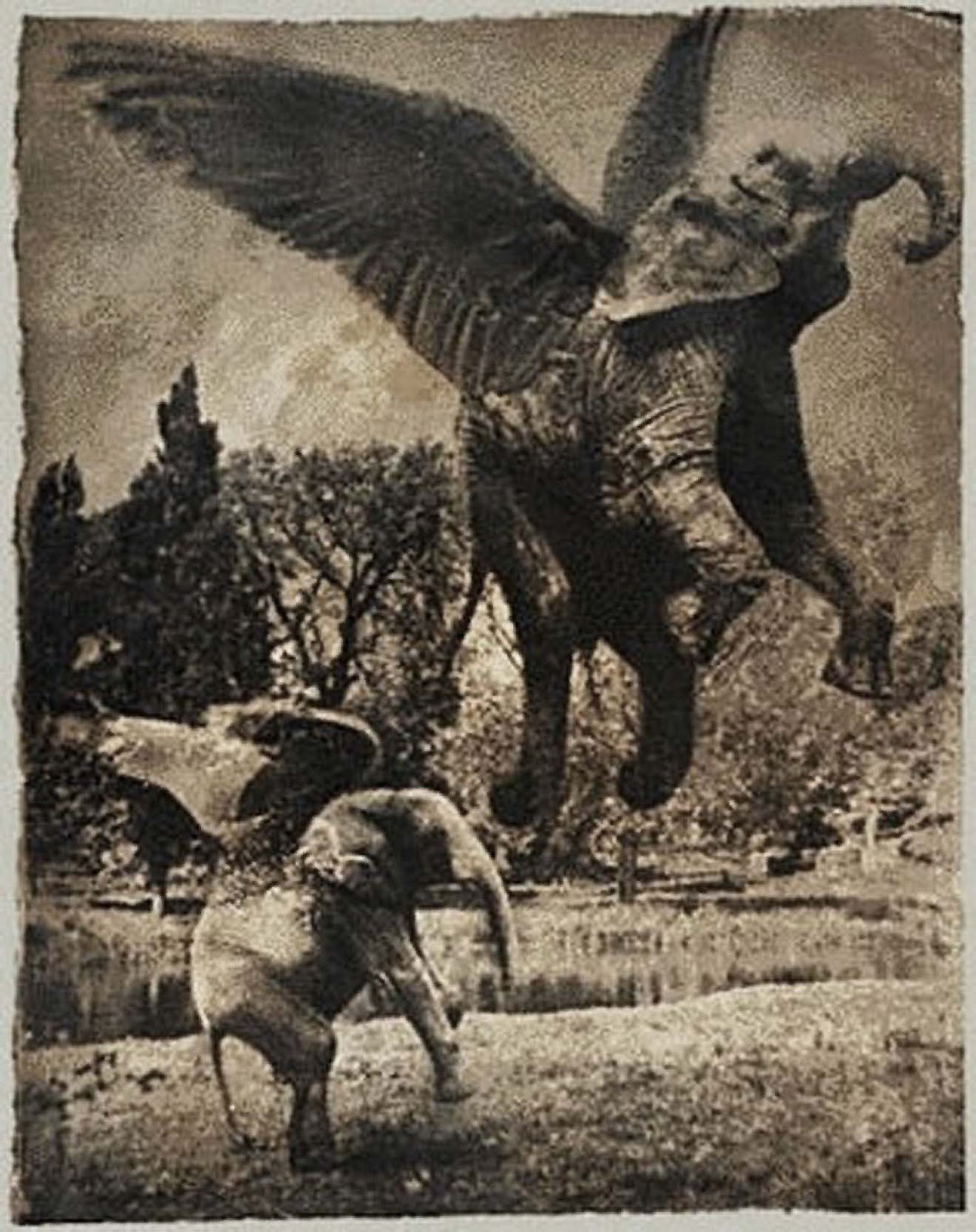
Bića koja je život odbacio jer su previše zanimljiva.
A sada i googlegrams.
www.fontcuberta.com/
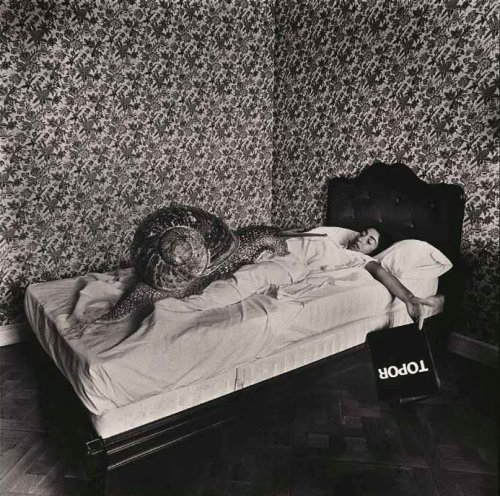
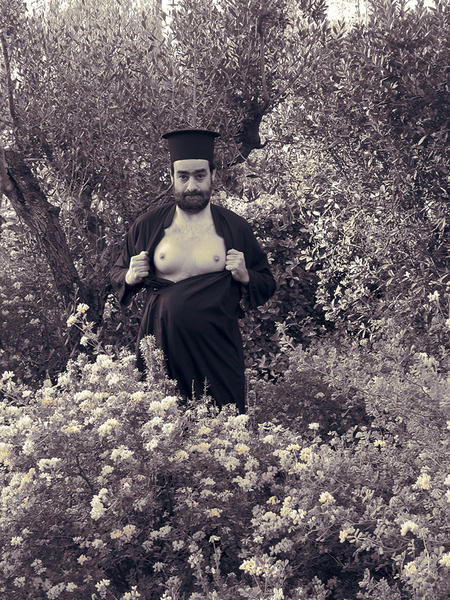






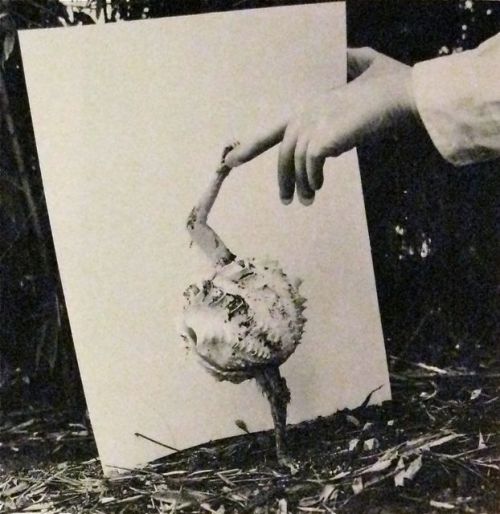
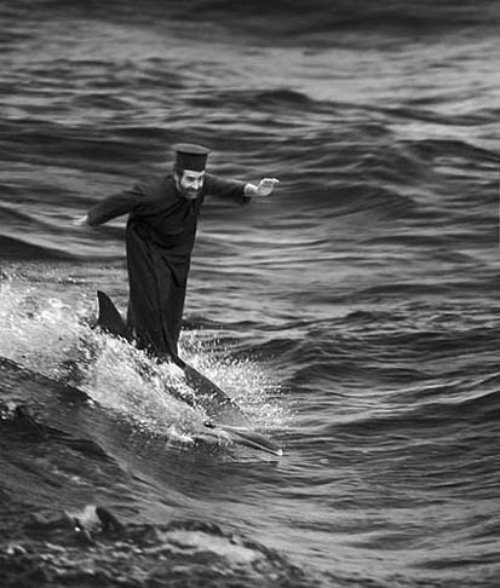
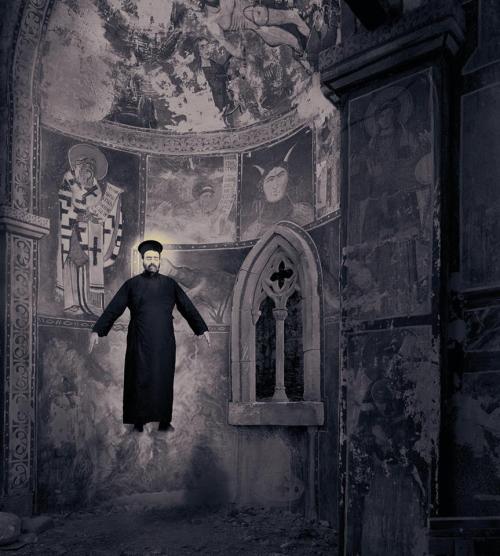
Joan Fontcuberta, from his "Karelia: Miracles & Co." series
Joan Fontcuberta, Author of Ficciones*
When I arrived at last week’s Art Papers lecture at Emory, I didn’t realize I was already familiar with the work of photographer Joan Fontcuberta. He spoke of his career as an art world jester who—without informing his audiences of his duplicity—stages completely fake exhibitions.
Fontcuberta’s subjects include fictitious cosmonauts (Sputnik) and exotic, yet nonexistent hybrids of the animal kingdom (Fauna). But for some reason he omitted (or perhaps I just dozed off) mentioning that he was the mind behind those brooding Holy Men of “Karelia: Miracles & Co.“

That's Fontcuberta's face. The rest is a real ad for "Mecca Cola."
An ironist who dubs himself a “conceptual artist who happens to wield a camera,” Fontcuberta cited Jorge Luis Borges, the famed Argentine novelist, as one of his intellectual fathers. Since the talk, though, the ghost of Karelian mysticism seems to overshadow anything else. His literary connection makes sense, but something about that series smacks more of his fellow Spaniard, Guillermo del Toro.
The first time I encountered “Miracles & Co.”, I didn’t understand the context of Fontcuberta’s work. I actually thought the photographer was a mystic. So I revisited the series with fresh eyes—all it takes is one look at this ridiculous Cthulhu knock-off, and it’s clear: this can’t be serious.
 In the most convincing photos, though, Fontcuberta achieves the pathos of belief (waxing the emotional abandon of the Romantic
period), implying that the author at least was a true convert.
Foreboding and even hinting at the aged quality of old film, the scenes
recall a time when even freakish mystics like Rasputin could walk the
earth with official approval.
In the most convincing photos, though, Fontcuberta achieves the pathos of belief (waxing the emotional abandon of the Romantic
period), implying that the author at least was a true convert.
Foreboding and even hinting at the aged quality of old film, the scenes
recall a time when even freakish mystics like Rasputin could walk the
earth with official approval.At left: from the early series, “Herbarium.” Fontcuberta preferred to call these “chemigrams”—essentially a photogram, though these are made by direct sunlight rather than in a darkroom. The effect is quite beautiful. Really, “Herbarium” deserves a post all on its own, since these “herbs” are actually made of melted tires and other inorganic garbage. (The concept is similar to Steve Aishman’s current show at Solomon Projects.)
 *Borges’ Ficciones
contains a short story titled “Pierre Menard, Author of Don Quixote.”
The narrator argues that a false version of Cervantes’ classic is
actually more authentic than the original.
*Borges’ Ficciones
contains a short story titled “Pierre Menard, Author of Don Quixote.”
The narrator argues that a false version of Cervantes’ classic is
actually more authentic than the original.burnaway.org/2008/10/joan-fontcuberta-author-of-ficciones/
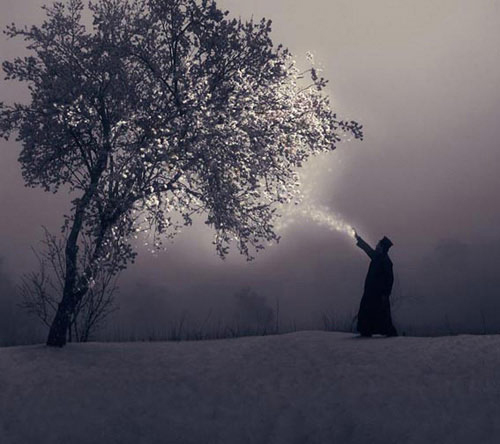
There’s been a lot of discussion lately about the relationship between reality and photography. There’s been discussion about what constitutes a "photograph." These aren’t new discussions, of course (although given flickr’s NIPSA rules, they are increasingly personal and pertinent). This seems an appropriate time to discuss the work of Spanish photographer Joan Fontcuberta.
Fontcuberta has devoted himself to creating images intended to call the integrity and authority of traditional photography into question. His work is deliberately provocative, intentionally iconoclastic, and usually tinged with a wickedly sharp sense of dark humor. He is not shy about injecting his political beliefs into his photography.
Like so many photographers, Fontcuberta prefers to create a series of images in order to more thoroughly explore the issues he finds of interest. Some of these series are very clearly products of his artistic imagination, and the photographs are obviously not intended to represent reality. For example, his recent series Miracles & Co documents an imaginary isolated sect of monks who have developed miraculous…and totally useless…powers.
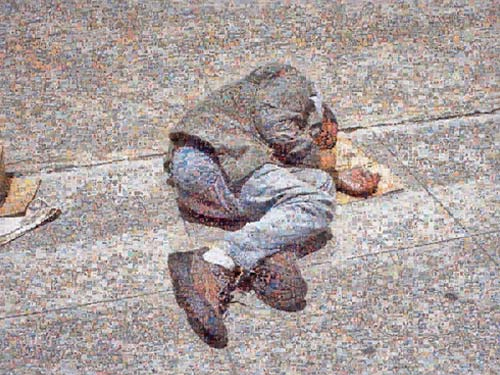
Fontcuberta enjoys finding technology created for one purpose and using for a totally different purpose. For example, his Orogenesis series uses software developed by the military to render a three-dimensional terrain image based on scanned two-dimensional photographs/maps (you scan a flat satellite image of a valley, and the software will create a 3D version of the terrain suitable for training pilots to fly through the valley). Instead of scanning satellite photographs or maps, though, Fontcuberta scanned paintings by such disparate artists as Gainsborough, Cézanne, and Dalí. The result were strange, three-dimensional "terrain" maps of places that don’t exist.
Similarly, Fontcuberta used photo-imaging freeware and Google’s image search engine to create a series of photomosaics based on photographs he found in the public domain. The following composite image was created from 10,000 separate photos he obtained through a Google image search of the names of the 25 richest persons in the world according Forbes magazine (I could find no credit given for the original photo of the homeless man).
Fontcuberta’s work is incredibly diverse. In Sputnik he created a fictional account of a Soviet cosmonaut who was lost in space. He did something similar with Pin Zhuang, a sci-fi series of images that purportedly represent a variety of Chinese spacecraft assembled from the wreckage of a U.S. spy plane that crashed in China. He has photographed bugs splattered on the windshield of a car windscreen during a drive at night, turning the mashed bodies into images of a starry sky.
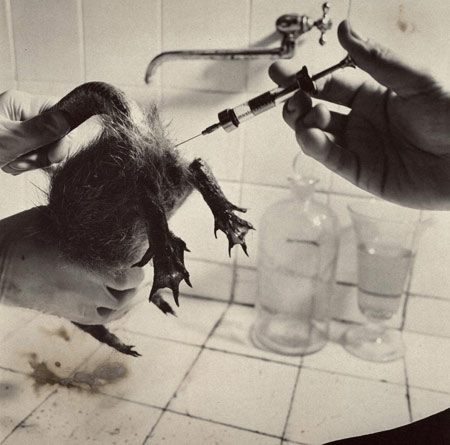
His work even includes spoofs of scientific discoveries. In the late 1980s Fontcuberta received some criticism for his series Dr. Ameisenhaufen’s Fauna. Some of the photographs (along with drawings and sketches) were originally published as illustrations for a serious piece of journalism examining the life and career of the fictional Dr. Ameisenhoufen and his amazing discoveries. At first glance, the article was utterly convincing; on closer examination, it was totally obvious that it was a spoof. In later gallery and museum shows the series (and Fontacuberta himself) received criticism for calling "the authority of the photograph" into question. The series was derided more as a literary hoax than a work of visual art.
Fontcuberta, who teaches photography in a Fine Arts program at a university in Barcelona, has stated photography "should be taught not in fine art schools…but in philosophy schools." He insists photography is a way of thinking more than a way of art, and he sees his role as undermining the legitimacy and authority of the photograph as a depiction of unquestioned reality.
www.utata.org/sundaysalon/joan-fontcuberta/
Fauna – Joan Fontcuberta
A crypto-zoological document of the utmost important, it could be said, the narrative constructed here by Fontcuberta & Formiguera of Dr. Peter Ameisenhaufen is a fascinating read, an example of taking fiction to a level beyond simple narrative, instead creative a life and the documents that the life left behind. The photographs here, documents of Dr. Ameisenhaufen’s “New Zoology” are all wonderful, broken plates and scratched negatives, these construction creatures deserve to exist despite the fact that they don’t. -Impossible Mike
 Joan
Fontcuberta was born on February 24, 1955 in Barcelona. His work has
been widely exhibited internationally, including solo exhibitions at
Museo Español de Arte Contemporáneo, Madrid; Musée de l’Elysée,
Lausanne; Museum of Fine Arts, Fukui, Japan; The Photographers’ Gallery,
London; and the Art Institute of Chicago. It is also well-represented
in public collections around the world, including those of the Musée
d’Art Moderne, Centre Georges Pomidou, Paris; Museum of Modern Art, New
York; Ludwig Museum, Cologne; Fons d’Art de la Generalitat, Barcelona;
and Los Angeles County Museum of Art. In addition to his activity as
artist, critic, and co-founder of Photovision, since 1996 Fontcuberta
has also been a professor of audiovisual communication at the
Universitat Pompeu Fabra de Barcelona.
Joan
Fontcuberta was born on February 24, 1955 in Barcelona. His work has
been widely exhibited internationally, including solo exhibitions at
Museo Español de Arte Contemporáneo, Madrid; Musée de l’Elysée,
Lausanne; Museum of Fine Arts, Fukui, Japan; The Photographers’ Gallery,
London; and the Art Institute of Chicago. It is also well-represented
in public collections around the world, including those of the Musée
d’Art Moderne, Centre Georges Pomidou, Paris; Museum of Modern Art, New
York; Ludwig Museum, Cologne; Fons d’Art de la Generalitat, Barcelona;
and Los Angeles County Museum of Art. In addition to his activity as
artist, critic, and co-founder of Photovision, since 1996 Fontcuberta
has also been a professor of audiovisual communication at the
Universitat Pompeu Fabra de Barcelona. The
work of Joan Fontcuberta makes able use of narrative, wordplay, and
visual arrangement to press questions about photographic truth and
representation. Complementing a history of painstaking photomontage and
other fabrication, Fontcuberta also produces straight images of chance
encounters and curious juxtapositions. The frost-damaged cacti of Costa
Llobero Garden, Barcelona, Spain play with the authenticity suggested by
the camera and the dubiousness conjured by an odd and unfamiliar
situation. Interpreted as exotic creatures, staged event, or seasonal
botanic response, the image and its origins take a second reading in
context of Fontcuberta’s other projects.
The
work of Joan Fontcuberta makes able use of narrative, wordplay, and
visual arrangement to press questions about photographic truth and
representation. Complementing a history of painstaking photomontage and
other fabrication, Fontcuberta also produces straight images of chance
encounters and curious juxtapositions. The frost-damaged cacti of Costa
Llobero Garden, Barcelona, Spain play with the authenticity suggested by
the camera and the dubiousness conjured by an odd and unfamiliar
situation. Interpreted as exotic creatures, staged event, or seasonal
botanic response, the image and its origins take a second reading in
context of Fontcuberta’s other projects.
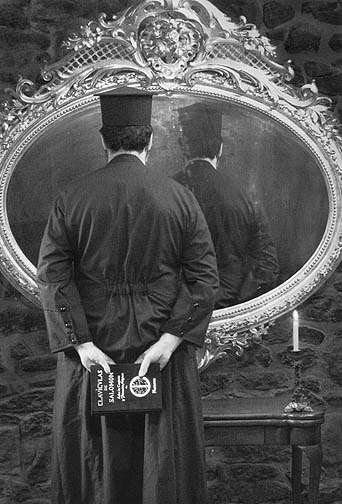
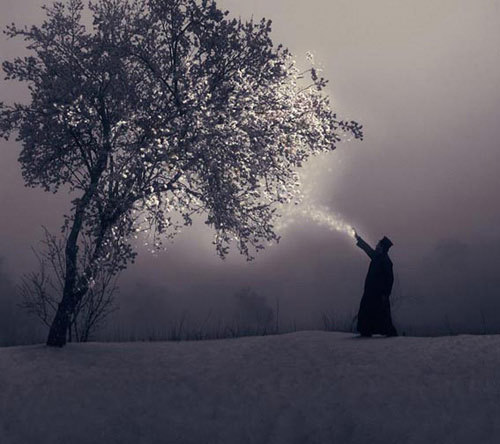
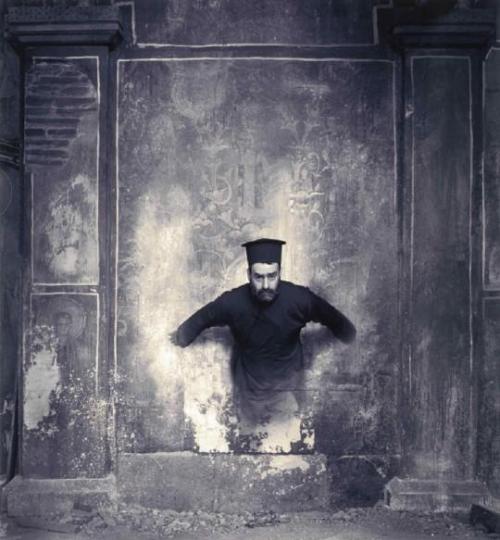
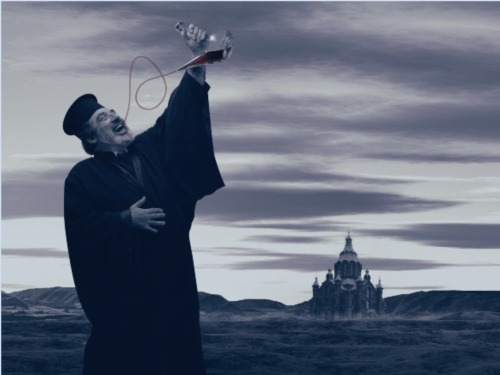
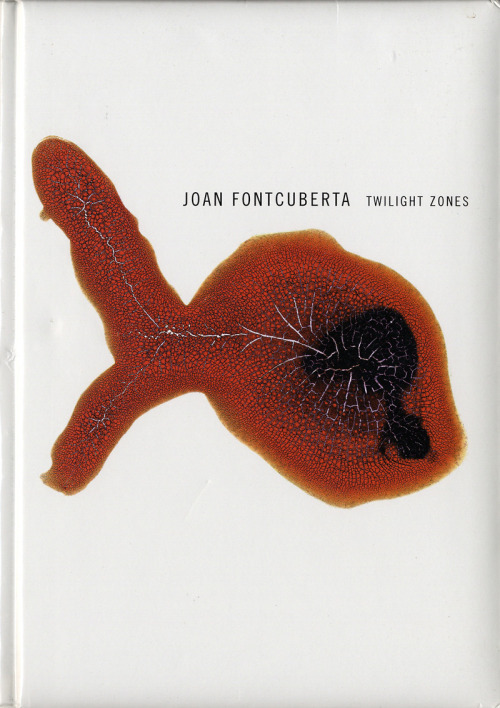
Joan Fontcuberta: Googlegrams

The mass media are not known for subtlety. From the old-school fourth estate of newspapers to the non-stop streaming of TV and the internet, images of celebrity, scandal, death and destruction are shoved down our throats 24/7. In his hi-tech, photo-montaged Googlegrams, Joan Fontcuberta spews them up and strikes back.
Fontcuberta uses the omnipresent juggernaut Google as his weapon of choice. The Spanish artist taps clever keywords into the search engine and it randomly chooses thousands of tiny images. Fontcuberta then uses free software to assemble them like mosaic tiles into one giant image.
Fontcuberta's Googlegrams point the finger. In Abu Ghraib, the scandalous image of US soldier Lynndie England dragging a nude prisoner like a dog on a leash was created by searching the names of those involved in the prison atrocities. In Crucifixion, Fontcuberta tracked words such as torture, martyr and redemption to recreate the iconic news image of an Iraqi citizen tortured in a Jesus Christ pose.
In Iraq, an image lifted from the web shows a man's head literally blown to bits. It's an absolutely horrific picture and a damning indictment of an unprovoked war. Fontcuberta drives this fact home by constructing the image using the names of Bush's "coalition of the willing". Sure enough there's John Howard, bathed in blood.
Fontcuberta's images may break down into tiny rectangles, oversized versions of the pixels that created them, but they lack the clean, cold distance of digital ones and zeroes. His Googlegrams are a short, sharp slap in the face. If only we could wake up.

The Internet and search engines have become so much a part
of our lives that the brand name Google has entered our language as a
verb. It's not really surprising then that it should also infiltrate arts
practice; although Joan Fontcuberta's art might not be exactly how you'd
picture new technology being used.
The Australian Centre for Photography will be presenting Fontcuberta's
Googlegrams exhibition this month, opening on 13 July. Fontcuberta has
used the Google search engine to create large, colourful photo-mosaics
that construct an elegant metaphor for the internet-era’s liaisons
between mass media and our collective consciousness.Never resting at the boundaries of his medium, Fontcuberta takes a step further back from the process of photography, using Google image searches to blindly cull images from the internet by controlling only the search engine criteria with the input of specific key words. These Google-selected images are then assembled into a larger image of Fontcuberta’s choosing, displayingan often challenging relationships between words and pictures. Fontcuberta’s concept focuses on the deft juxtaposition of search-engine criteria against the larger image those criteria comprise.
Thumbnail portraits of the richest men and women in the world are pieced together into a mosaic depicting a homeless man; the iconic image of detainee tortured at Abu Ghraib is cobbled together out of images of public officials involved in the scandal.
Like traditional photomosaics, Googlegrams have the pictorial tension of being legible on two different scales, illustrating Fontcuberta’s interest in both trompe-l’oeil and palimpsest. Unlike other mosaics, these works also exhibit the friction between the artist’s selections and the supposedly impartial selections of the computer. In representing these tensions, Googlegrams become emblematic of today’s media culture, presenting a sterile archive built of many decentralized voices competing for attention.
As the artist notes, the Internet itself is “the supreme expression of a culture which takes it for granted that recording, classifying, interpreting, archiving and narrating in images is something inherent in a whole range of human actions, from the most private and personal to the most overt and public.” World affairs and human sexuality are topics mediated by the cacophony of news, pornography, blogs and ads on the information-superhighway. The thousands of images that comprise the Googlegrams, in their diminutive role as tiles in a mosaic, become a visual representation of the anonymous discourse of the Internet. With his characteristic sense of mischief, Fontcuberta brings these tensions together in a provocative demonstration of media navigation.
Joan Fontcuberta was born in 1955 in Barcelona, where he continues to live and work. He has exhibited extensively at museums and galleries in the U.S., Europe, and Japan. His work is in numerous institutions, including the New York Museum of Modern Art, the San Francisco Museum of Modern Art, and the Art Institute of Chicago. - www.theblurb.com.au/Issue79/Googlegrams.htm








Nema komentara:
Objavi komentar